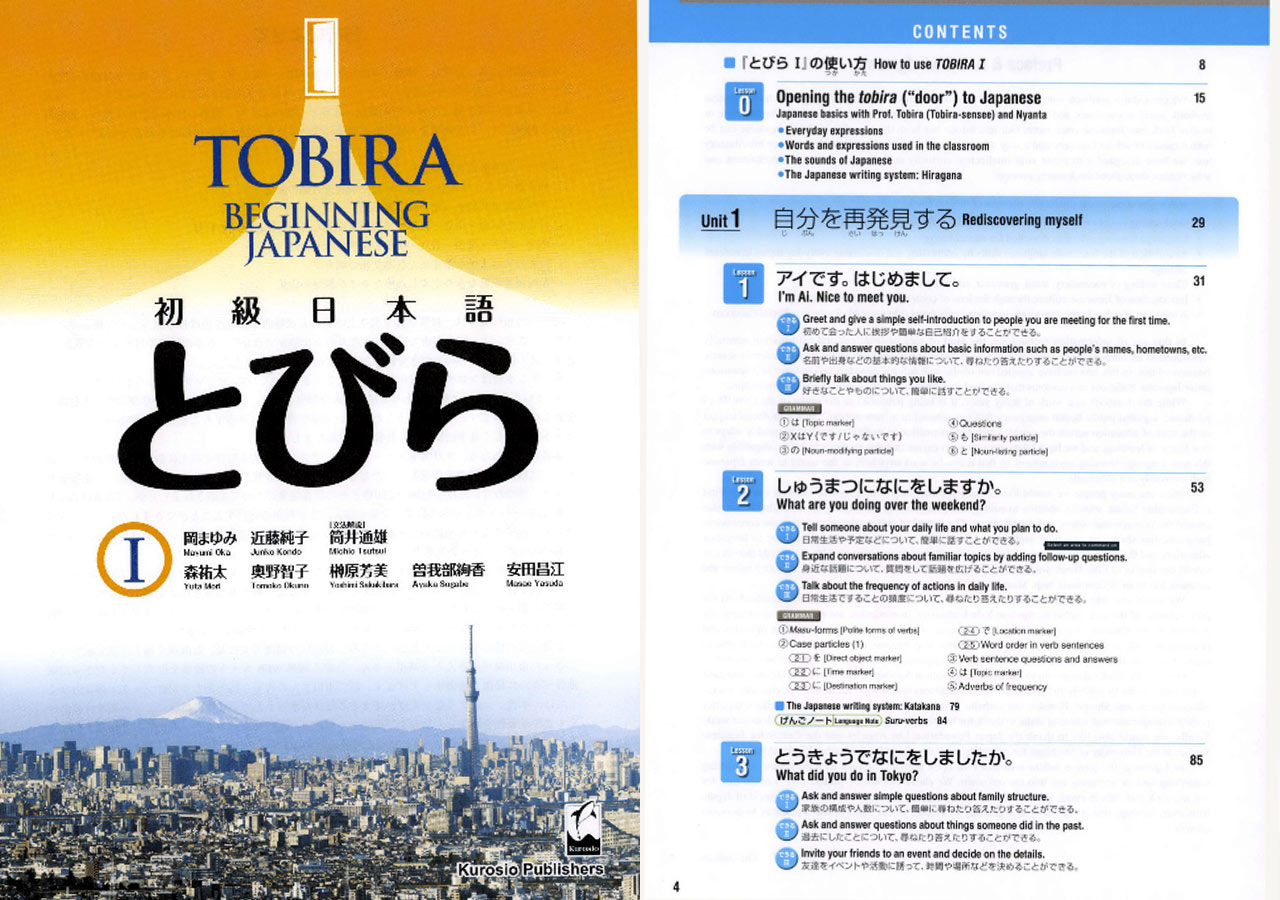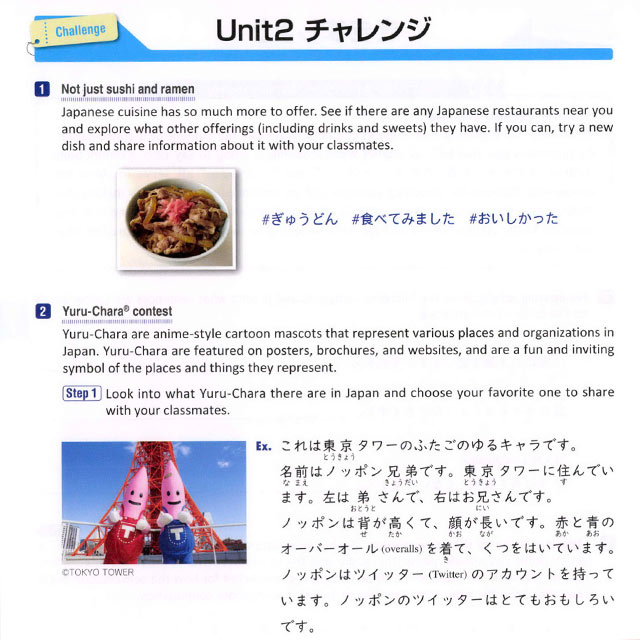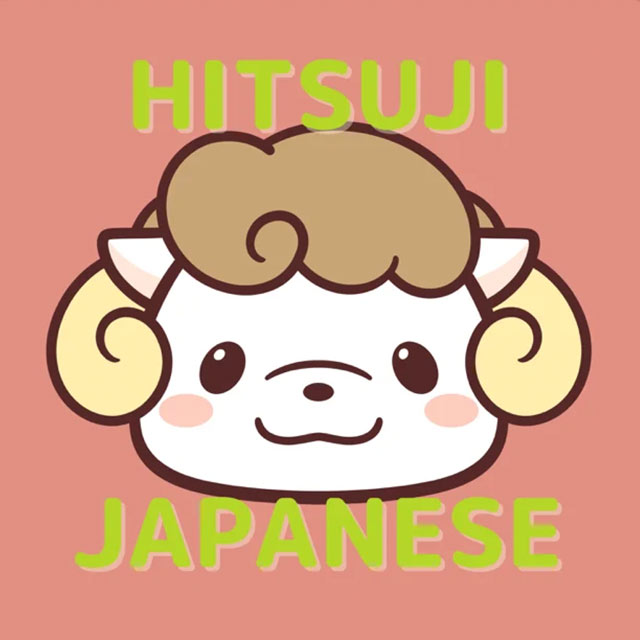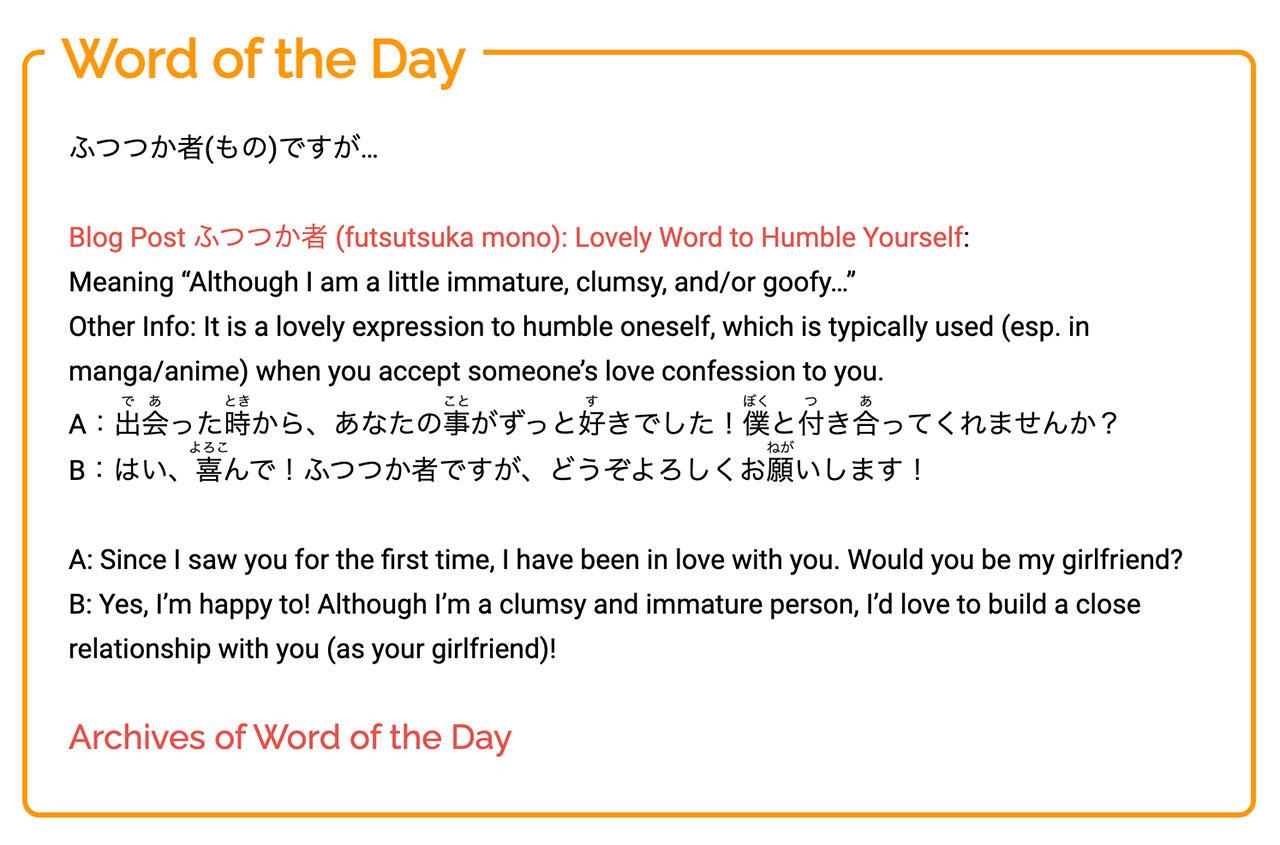Looking for some new ways to study Japanese this autumn? You've come to the right place. This fall edition of our New Japanese Learning Resources has plenty of great options for you. Don't fall behind, but instead, fall into, and then maybe fall in love with, your new study materials!
- Tobira 1: Beginning Japanese
- Comprehensible Japanese
- Outlier Linguistic's Kanji Masterclass
- Learn Japanese with Sayaka YouTube Channel
- A Family
- Meshclass Japanese YouTube Channel
- Hitsuji Japanese
- Shiro Neko Japanese
- Takashi's Japanese Dictionary (Takashionary)
- NihongoDekita with Sayaka
- Hanasaki Japan
- もしもしゆうすけ YouTube Channel
- CRAZY JAPANESE LESSONS YouTube Channel
Tobira 1: Beginning Japanese

This long-awaited text is the beginner-level version of the infamous Tobira: Gateway to Advanced Japanese textbook. In typical Tobira fashion, the content is highly organized and packed with information. With this beginner text, the authors attempted to create a curriculum for "digital natives," by utilizing a lot of online and interactive resources — the Covid-19 pandemic was mentioned as part of the reason for this strong technological integration. The writing is academic, yet playful at times, thanks to the characters included throughout the text — Nyanta (a cat), Tobira-sensei (a floating, sentient computer screen character of sorts), and others. Some learners may be put off by the sheer amount of text and rigid design of this book. It's a typical college classroom Japanese textbook that almost reminds you of the Yōkoso or Nakama series. While it's not impossible to use it for self-study, this text seems to be most suited for guided learning in a classroom setting.

The Tobira 1 book is made up of 10 lessons, which are further divided into 3 units. Every unit contains 3 to 4 lessons that integrate related grammar and around 70 vocabulary words and phrases. Unit 1, for example, is called "Rediscovering Myself," and has 3 lessons about first introductions, asking what one is doing over the weekend, and talking about what someone did during their trip to Tokyo. Each lesson opens with a Dekiru List, which is just a list of goals or linguistic objectives for the learner.
Vocabulary is presented in two parts: the first part contains visuals while the second part is a simple vocabulary list. Pitch accent is also a strong focus in this text — every new vocabulary word is presented with lines above mora (the Japanese equivalent of syllables) to indicate a high pitch on that mora. The grammar presented in each lesson contains a breakdown of a key sentence along with an explanation and plenty of example sentences, which are great for sentence mining. Tobira 1 even has a QR code feature to bring you to their website for additional content such as in-depth grammar explanations. Lessons end with speaking, reading, and listening practice (in that order). After Lesson 1, romaji for words in hiragana stops. And after Lesson 2, they stop for katakana too. Kanji study begins from Lesson 3 onward. At the end of Tobira 1, you will learn all of hiragana, katakana, and 139 basic kanji.
If you enjoy a highly structured curriculum with a rustic, wordy design, then Tobira 1: Beginning Japanese may be just the text for you. This textbook really has everything one needs to go from level 0 to the end of the beginner level, and on to intermediate. The online integration is a nice feature but is definitely not necessary for a complete learning experience. And at 3,850 yen on Amazon Japan, the price is definitely worth what you are getting.
Comprehensible Japanese
Comprehensible Japanese makes learning easy to understand through videos that explore various topics for beginner and intermediate learners. The video creator, Kimura Yuki, has a substantial following on YouTube, despite having started only seven months ago. She also has a website by the same name, with even more videos, and transcripts to go along with them. The transcripts are in Japanese but have three different types, so you can choose the one most suitable for your level — furigana with spaces, regular furigana, and no furigana at all. On the site, you can have access to special members-only videos for a small monthly fee. The great thing is you can see a lot of her videos for free first, and if they are something you want to delve deeper into, you can get the subscription.
Each video is around five minutes in length. The topics range from Japanese history, culture, personal stories, and basic lessons. Yuki uses simple drawings and pictures to illustrate her points. She speaks slowly and clearly, repeating important words and using synonyms. Because she speaks entirely in Japanese, and there are no English transcripts, this may be challenging for absolute beginners. We think it's the perfect level for relative beginners who have already done some studying or intermediate learners.
Outlier Linguistic's Kanji Masterclass
Created initially to offer resources to those learning Chinese, Outlier Linguistics has since broken into teaching Japanese as well. Their primary program for Japanese learners is their Kanji Masterclass. This class, taught via video lessons on their web platform, focuses on teaching the best practices for studying kanji characters, as well as simplifying the characters themselves. This multifaceted approach not only gives students more information on kanji, but a better understanding of how to learn on their own.
The focus of the course is on breaking down characters into their components, or comprehensive parts, which tends to offer either meaning or pronunciation information of the full character. Outlier reduces kanji to their basics, showing the etymology of how characters evolved over time. This can help solidify the meaning of kanji, and also in understanding compound characters and vocabulary later on.
The course is still ongoing, with new lessons being released roughly each week. Additionally, Outlier offers a separate dictionary app that can be used to find components in the vast majority of kanji. The price is steep, but the program, as released thus far, is both well thought out and interesting.
Learn Japanese with Sayaka YouTube Channel
A Japanese language learning channel, Learn Japanese with Sayaka, offers a unique perspective on Japanese language learning. The host, Sayaka, was born in the US, but moved to Japan when she was nine years old. Because of this, she's bilingual, but has first-hand experience of how difficult learning Japanese can be!
The channel is just getting started, but Sayaka already offers a few different styles to her videos. Most of her videos are in both English and Japanese, often with explanations in English. She has two longer videos describing detailed tips for writing hiragana and katakana characters. She also has videos describing important vocabulary and grammar points, such as words related to emotions. Lastly, she has some Japanese language podcast videos, where she speaks about a certain topic entirely in Japanese with Japanese subtitles.
There's only a handful of videos available at the moment, but based on her Twitter account, it seems like more are on the way. Given her unique experience, I hope so!
A Family
ヤクザと家族, called A Family in English, is a film about the lives of modern-day yakuza. Yakuza are basically Japanese mafia members, and there are many gangs that make up the system. The movie portrays the world of yakuza, with its territorial feuds, hierarchies, rituals, and plenty of shady practices. Although originally produced in 2020, it was just released on Netflix in June, so you can check it out there.
This thrilling, emotional, and action-packed movie follows the protagonist, Kenji, through different stages of his life. After his father dies at a relatively young age, Kenji joins the yakuza and they become his new family. His dedication to his group leads him down paths where he must act out of honor and familial pride.
Once you start this film, you likely won't be able to stop watching it, so make sure you have two hours and fifteen minutes of your day available before you start. A Family will possibly teach you a lot about yakuza that you didn't know before. I found the lives of yakuza out in the real world, as well as how others perceive them even after becoming ex-yakuza, to be especially enlightening.
Meshclass Japanese YouTube Channel
Meshclass Japanese is a YouTube channel with a wide variety of content related to Japanese grammar, JLPT prep, conversation, pronunciation, business Japanese, interview phrases, and more. While the videos are meant as a supplement to Meshclass's free and paid online courses on their website, they're a helpful resource on their own as well.
The videos are led primarily by a native speaker named Tezuka-sensei, with a small supporting cast. Most come in at just under ten minutes, keeping the information concise while still offering a thorough explanation of the content and sections to test your knowledge as you go. Tezuka-sensei's teaching style is also slow and clear, with a gentle manner.
Additionally, almost everything about the videos is in Japanese, including the explanations. This makes them great for in-depth immersive learning, especially for people with some basic knowledge of Japanese already. And if you need them, most videos have subtitles in many languages, so you'll probably get something out of it even if you can't yet follow Japanese speech.
Hitsuji Japanese

Hitsuji Japanese is a podcast that started back in June 2021, created by a Japanese teacher named Luna-sensei. So far, Luna-sensei has released dozens of podcasts, all in Japanese. Because the focus is on intermediate to advanced learners, the episodes fall into one of two different categories, according to your JLPT level — N4-N3 or N2-N1. It's easy to tell which podcasts target which levels, because it's always listed at the end of the episode title.
The topics of Hitsuji Japanese podcasts range from ways of studying Japanese to daily life and culture in Japan. Most episodes are a little under ten minutes long. They also have transcripts in Japanese, which you can view while listening or re-listening to the podcast episodes. If you're looking for some extra listening practice, this may be for you.
Shiro Neko Japanese
Shiro Neko Japanese is a YouTube channel dedicated to teaching simple Japanese grammar in a visual way, using a cute cat named Shiro. In fact, the channel name, "Shiro Neko" means "white cat" in Japanese. This channel offers a wide range of content, from grammar to pronunciation to themed conversation lessons.
Many of the lessons follow the curriculum laid out in Genki 1. If you are using Genki 1 for learning Japanese, this channel would be an excellent supplement. Each video contains a dialogue (sometimes original, sometimes from Genki), along with a breakdown of phrases and grammar. However, perhaps the most useful parts are the designated "Practice" and "Takeaway" sections found in some uploads. Here, you have an opportunity to practice what was taught in the lesson as well as answer content-related questions.
The narration is clear and done by a native-Japanese speaker. While the overall speaking quality isn't bad, some viewers may find it boring or lacking emotion. Aside from this, romaji is used everywhere, so even beginners and learners without any hiragana knowledge can follow along.
In terms of teaching style, while simple grammar patterns are laid out well, some explanations can still get complicated and sound a bit copy-and-pasted from a textbook. For example, the video titled Conjugate from DICTIONARY form to TE form (Verb Conjugation #4) tends to use standard textbook terms, like "group 1 verbs." Also, Shiro Neko concocts inventive "hints" to remember things that you may find fun and helpful, or convoluted, depending on your preferences.
All in all, Shiro Neko Japanese's lessons are very structured, quick, and full of endearing illustrations. If you prefer a more textbook-like teaching style, but with adorable characters and scenarios, then you might fancy this channel. While far from a complete Japanese language learning resource, it's a useful supplement, especially if you're using Genki.
Takashi's Japanese Dictionary (Takashionary)

We first heard of Takashi's Japanese Dictionary through the Facebook page, where a word or phrase of the day is featured. Takashi, the owner, usually chooses idioms or unique Japanese phrases that aren't taught in textbooks. Besides Facebook, Takashionary — another name for the dictionary — can be viewed on Instagram, Twitter, and the website itself. Although Takashionary's been around for several years, we somehow only recently stumbled upon it, but are happy we did.
When perusing the site, after you check out the word of the day, you can delve deeper into certain topics, which have been made into blog posts. In these blog posts, you'll find more information, with sections including the definition, usage, examples, and related words. The Facebook and Instagram posts do not go into as much detail, but may be more appealing to those who want brief introductions to these words.
Something to note before you visit the site is that it's almost entirely written in English. If you're past the beginner level, you could use the words as building blocks for more Japanese-based research, or for your flashcards.
NihongoDekita with Sayaka
With its first upload in May 2021, this fairly new YouTube channel aims to help you learn Japanese expressions and culture through a combination of long and short YouTube videos. The channel's creator, who goes by Sayaka, originally started with posts on Instagram and then moved to making videos on YouTube.
As of September 2021, the channel boasts around 20 videos with new ones being uploaded regularly. The first few videos are longer and go into detail about certain aspects of the Japanese language. In her video about greetings in Japanese, Sayaka provides both formal and informal examples and even gets into the nitty gritty when explaining common questions such as, "Why does こんにちは have は at the end instead of わ?" All of her videos are beginner friendly, including romaji as well as furigana for all of the kanji that's used.
The bulk of her uploads are smaller videos — which she labels as "#shorts" — and are imported to YouTube directly from her TikTok account. In typical TikTok fashion, these shorts are informative, creative, and sometimes funny as well. In a short entitled, "'I’m excited' in Japanese," she highlights the dangers of using the word 興奮 — as well as the dangers of using Google Translate — and provides some safe alternatives for learners.
NihongoDekita is a small channel but likely worth watching for absolute beginners. The overall production of each of the channel's videos is good — there is a wide variety of illustrations, transitions, captioning, and content. Additionally, Sayaka explains everything in English and really makes things understandable, even for total beginners.
Hanasaki Japan
Hanasaki Japan is both an Instagram page and a YouTube channel, produced by two women with the memorable names Hana and Saki. On Instagram, Hana and Saki post short snippets, each of which gives an example of the real-world usage of a word. The words that are featured are useful for everyday conversation and include some slang. There are also subtitles, so you can follow along at the bottom of the screen.
Although there aren't as many YouTube videos, Hana and Saki do release them every so often, and they correspond with some of their other content. The YouTube videos have subtitles in English and Japanese, which reflect most of what is said. These videos are longer than the Instagram videos, because they go into more detail and give extra examples.
I will likely follow the Instagram page as a way to learn new words, or see examples of word usage while scrolling through my feed. I think it'd be challenging as a beginner learner to practice with Hanasaki Japan, as there isn't much translational help on their Instagram page, but their page would likely be most beneficial for an intermediate learner.
もしもしゆうすけ YouTube Channel
Yūsuke's YouTube channel, もしもしゆうすけ, has been putting out videos for the past two years. The videos focus on offering native Japanese speech styles, and fall into three different categories — "File," where Yūsuke goes somewhere and interacts with locals, "Monologue," where Yūsuke walks around somewhere and speaks slowly about a topic, and "Conversation," where, you guessed it, Yūsuke has a conversation with another native speaker.
Of course, given the nature of the videos, the Japanese used is about as natural as can be — none of the video series are even scripted! Additionally, Yūsuke provides subtitles on screen for the videos in both Japanese and English. It would be nice if they used the YouTube closed captioning option so it could be toggled on and off, but it's a nice way to confirm if what you heard was correct.
This is a great resource for listening practice, with normal everyday Japanese and a variety of interesting topics.
CRAZY JAPANESE LESSONS YouTube Channel
CRAZY JAPANESE LESSONS is a YouTube channel from the Fuji Television Network company. They release lessons once weekly on Sunday mornings starting at 5am JST. The lessons are very professionally made, and hosted by comedian, Nobuyuki Tsuchiya, and his puppet partner, ぺるり (Peruri). The videos are super bite-sized, usually coming in under two minutes. As the name "CRAZY JAPANESE LESSONS" might suggest, they tend to focus on teaching a funny idiom or expression used in Japanese, including how it originated. CRAZY JAPANESE LESSONS also includes subtitles in both Japanese and English, though the English subtitles definitely take precedence.
While CRAZY JAPANESE LESSONS doesn't offer a complete course in Japanese, they're certainly entertaining, and a fun way to learn new expressions to try out on your friends.
That's the end of it! We hope you liked reading about the newest resources we tested and enjoyed. If you find Japanese learning resources you'd like to share with us, send us an email at hello@tofugu.com or reach out to us on Twitter @tofugu. Even if it's only new to you, send it our way. We're always looking for quality resources. Until next time, friends!
